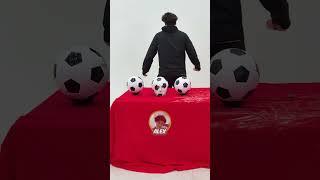
How to Make Patina on Copper with Everyday Items
Комментарии:

The ones with the rice turned into rose gold.
Ответить
Great video - your voice and the music made me feel I was in a video game.
Ответить
thanks for sharing the results of your experiments!
Ответить
Will these methods work for wire jewelry? i cant quite tell if your copper wire is taking the effect. Much appreciation for the video 🎉
Ответить
Ammonia for blue, vinegar for green.
Ответить
have you tried acetone for copper if possible or is that until future project
Ответить
❤Amo este video!!
Gracias por compartir!!

my goodness what a lot of time youve put into these experiments, with some fabulous results, thank you so much for the inspiration.
Ответить
Is there a video of make tje copper arrowhead?
Ответить
I wanted to watch it but then the fucking robot voice convinced me not no.
Ответить
Loved the video but hated the music.
Ответить
Thanks for showing us this, it's a lot of work. Andy yes, the blue has to be the best.
May thanks. kind regards . . . Andy

You could also use big salt flakes for different pattern
Ответить
What about baking soda paste with viniger
Ответить
One thing I found was that after the bluish patina was set and dry, I Q-tipped it with hydrogen peroxide resulting in interesting dark brown to black shades. One of them was hard and scaly, resembling oriental black lacquer. But nothing was predictable ahead of time.
Ответить
Try hard boiled eggs. I've used them when I don't have any sulfur based patina around. Also, your times could be shorter. When I use liver of sulfur I get some nice reds when I soak them for a short time.
Ответить
Try yellow mustard,/ammonia
Ответить
The best copper' patina video you would ever find ❤
Ответить
This video is amazing! Thank you for sharing!
Ответить
You printed these with a 3D printer?
Ответить
I wonder if a wax finish would retain the original colours ?
Ответить
Great Work, thank you for share you results.
Ответить
Muchas gracias profesor por presentar videos q permitan su traduccion al español. Muy interesantes sus clases.Gracias por su aporte.
Ответить
Ty! Pretty cool - how safe are these techniques? Do you need to do them outside?
Ответить
Hi✌️
Please help🙏, How to get a sustainable green color?

Nice to display of patinas may I ask where you got that cool 3-D printed arrowhead design
Ответить
🤩
Ответить
I'd love to see even more experiments, this is very interesting
Ответить
Solamente agradecer tu bondad para compartir tus experiencias y por todo tu tiempo, todas son muestras bellas. Gracias gracias gracias
Ответить
I love the experiences. My favorites are 2, 3, 4 and 7. Thank you so much!
Ответить
Great video! I've known about ammonia and vinegar patinas, but never thought to try soy sauce, I'm definitely going to do that.
I don't think the rice experiment worked because the rice was cooked and already contained moisture. I would try uncooked rice so it soaks up the ammonia/patina solution like the woodchips do. I would also try putting a few pin holes when using a bag to seal pieces in patina solution. I believe that the science behind patina causes it to develop as the solution dries on the piece itself, which is why using fumes is so successful. Keeping the piece locked in a moist environment will not develop the patina. Try it out, let us know the results!

Muchas gracias!! Ha sido una experiencia muy formativa. Me gustaría que hicieras un video sobre opciones de laca para preservar las pátinas. He escuchado acerca de lacas catafóricas usadas en joyería. Sigue adelante jugando y aprendiendo.
Ответить
the oxide created by ammonia or vinegar is very toxic
Ответить
Thanks for your experiments!
I personally love the soya sauce impact. Definitely have to try it:)
I normally use vinegar or ammonia, but I put salt in the solution in the very beginning and spray the same solution on the pieces. Sometimes I heat up the jar to speed up the process.
They give predictably green and turquoise respectively, but after spraying lack on the pieces, the color becomes almost the same:(


























